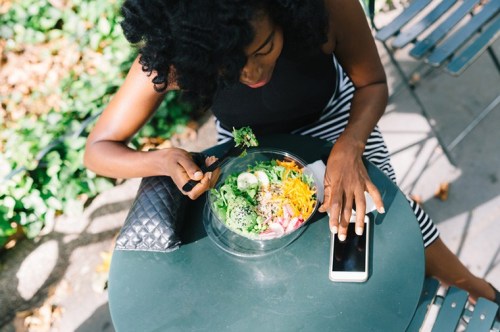Our editors independently select these products. Making a purchase through our links may earn Well+Good a commission
“The first thing people usually say to me is, ‘Oh my God, your skin is really nice,’” says wellness guru Shannon Vaughn. Her secret to a clear complexion? “I attribute that to water intake.”

Vaughn’s love of H20 runs deep—after all, she founded the bath-based detox line Pursoma—fueled in large part by her hydration-related studies at some of the top centers for Ayurvedic and alternative medicine in the world, including New York City’s Natalia Rose Institute and the Vedic Foundation of the Himalayas in India. She says the one thing both traditions have in common is an emphasis on water as a natural filter for impurities both inside and out.
So how much fluid is Vaughn consuming on the reg? “My body knows that it needs at least 100 oz. of filtered water a day,” she says. (That’s the equivalent of about a dozen eight-oz. glasses.)
Volume is only part of her hydration equation, however—the former model’s created an entire daily ritual around it, taking timing and temperature into consideration. Her system ensures she stays topped up 24/7, which can help with mental sharpness and sustained energy levels—and those perks are reason enough to reach for your Nalgene bottle.
So, just what goes into Shannon Vaughn’s skin-quenching protocol? Keep reading for the Pursoma founder’s 3 brilliant hydration rules.

1. Drink warm water
Vaughn subscribes to the Goldilocks approach—in order to stomach all that fluid, she doesn’t drink water that’s too hot or too cold. “Ice water shocks the system, and I can only drink so much of it,” she says. “I also don’t want coffee or tea that’s not comfortable to swallow.” (Yes, she does drink herbal tea and the occasional half-caf brew in addition to those three liters of agua.)
While Vaughn prefers room-temperature water simply because it’s easier to drink, Ayurveda and Chinese medicine both recommend the same. Cold water, in particular, is said to douse the digestive fire, and warm (but not scalding) drinks are believed to be beneficial. So be sure to let your matcha cool off for a few minutes before sipping on it.

2. Have the majority of your water before lunch
Even if you have the best hydration intentions, it’s easy to fall off the water wagon when your day gets busy. That’s why Vaughn finds it best to have designated drinking times, and to get most of her hydration in early.
“You’ve really got to get used to drinking water, and I think the easiest thing to do is create a habit,” she says. “I drink the first liter on an empty stomach when I wake up. Then, I drink another liter 30 minutes before lunch; a half-liter 2 hours after lunch; a half-liter 30 minutes before dinner; and a small glass 2 hours after dinner and right before bed.”
Another benefit to this system? It’ll give you a sounder night’s sleep—seriously. “You don’t want to dehydrate yourself all day and then get home and chug a bunch of water, because you’ll be running to the bathroom all night,” Vaughn says. Point taken.

3. Don’t drink water with meals
You may have noticed that Vaughn’s schedule doesn’t include any liquids with meals—just 30 minutes before, which studies have shown can help prevent overeating. In fact, she considers water off limits for 2 hours after lunch or dinner.
One reason for this: Some experts believe water interferes with digestion by diluting the enzymes used to breakdown food, though, mainstream medicine doesn’t agree with this theory. Vaughn has, however, pinpointed another benefit to a dry dinner that makes sense even if there’s no science to back it. “If you don’t have any water at the table, you’ll realize you need to chew your food better in order to swallow it,” she says. “You’ll slow down the way you’re eating.” And really, a few more mindful moments in the day would be enough to make anyone look a little more glowy, right?
As if these tips weren’t genius enough, check out the hydration hacks that power Rachel Zoe and Nikki Reed through their mornings.
Sign Up for Our Daily Newsletter
Get all the latest in wellness, trends, food, fitness, beauty, and more delivered right to your inbox.
Got it, you've been added to our email list.










